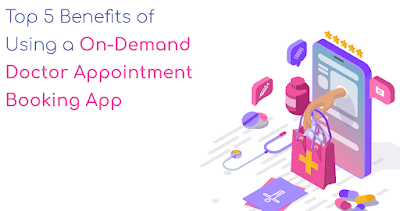A systematic approach is required when developing an on-demand doctor appointment booking app. Here's a general overview of the development process:
Idea and Conceptualization
Define the goals and objectives of your app. Evaluate your target audience and their needs. Conduct market research to analyze competitors and identify unique selling points.
Planning and Wireframing
Create a comprehensive feature list for your app, including user and doctor panels, appointment management, search filters, payment integration, notifications, etc. Develop a user flow diagram and wireframes to visualize the app's structure and user interactions. Plan the technology stack, platform (iOS, Android, or both), and backend infrastructure.
Design
Create an appealing and user-friendly interface design. Ensure the design follows best practices for healthcare apps and provides a seamless user experience. Design the doctor profiles, appointment booking screens, search filters, and any additional features.
Development
Create the app's front end with appropriate programming languages and frameworks like Swift (for iOS) and Kotlin/Java (for Android). Implement the backend infrastructure to handle user data, doctor information, appointment scheduling, and other app functionalities. Integrate APIs for features like real-time availability, location services, payment gateways, and push notifications.
Testing
Perform rigorous testing to ensure the app functions properly across different devices and operating systems. Check for performance, security, usability, and efficiency. Gather ideas from beta testers and make any necessary updates.
Doctor Database Integration
Collaborate with healthcare providers to integrate their doctor database into the app.
Implement search functionality to allow users to find doctors based on location, specialization, and availability. Enable doctors to manage their profiles, update their schedules, and communicate with patients.
Deployment and Launch
Publish your app on the respective app stores (Apple App Store, Google Play Store).
Ensure compliance with the app store guidelines and regulations. Create a marketing plan to promote and attract people to your app.
Maintenance and Updates
Evaluate the app's performance and user feedback regularly. Address any bug fixes, performance issues, or security vulnerabilities promptly. Regularly update the app with new features and improvements to enhance user experience.
Payment Integration
Integrate secure payment gateways to facilitate online transactions for appointment fees. Depending on user preferences and agreements with healthcare providers,
implement several payment options such as credit cards, mobile wallets, or
insurance billing.
Appointment Scheduling and Notifications
Implement a booking system that allows users to select available appointments for
time slots. Enable users to receive appointment reminders, notifications, and
upcoming appointments. Create a notification system to alert users when a user's
appointment or a doctor's availability changes.
Wrapping Up
Developing an on-demand doctor appointment booking app is a complex
process, and it is recommended to involve experienced mobile app developers, UI/ UX designers, backend developers, and quality assurance professionals. Additionally, compliance with healthcare regulations and patient data security should be given utmost priority throughout the development process.






